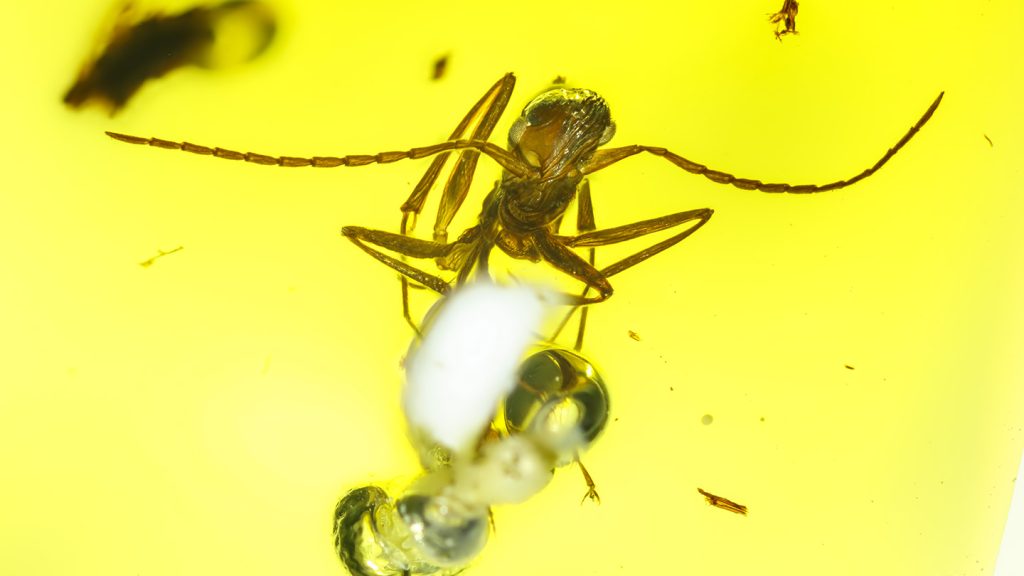Ants fossilized in 100-million-year-old amber exhibit sensory equipment that suggests they had complex social lives similar to their modern-day descendants. While all ants currently live in advanced societies with cooperative parenting and divisions of labor, their ancestors were solitary wasps. Researchers are unsure when the insects’ social lifestyle evolved, but evidence from early ants found fossilized in groups hints at social living during the Early Cretaceous Period.
A study by Ryo Taniguchi and colleagues focused on fossilized ants of one of the oldest known ant species, Gerontoformica gracilis. By examining the ants’ antennae, the researchers discovered two types of sensilla unique to ants, which are used for identifying nestmates and detecting alarm pheromones. These findings suggest that even in their early evolutionary stages, ants lived in a highly advanced social system that allowed them to work together and defend the colony as a single unit.
Using a specialized microscopy technique, the researchers imaged multiple sides of the fossil antennae to study the ants’ sensilla in detail. By comparing the fossil ants’ sensilla to those of modern ant species, they found similarities that indicate an early development of social behavior in ants. Despite living in small colonies of a few dozen nestmates, the early ants displayed characteristics that suggest the ability to cooperate and communicate effectively within the colony.
While many ant species today create massive colonies with thousands to millions of members, the fossil record suggests that the earliest ants lived in much smaller colonies. However, the researchers argue that even in their early stages of evolution, ants displayed advanced social behavior and cooperation. Tens of millions of years before becoming a dominant ecological force, ants may have already been marching together and working as a unified group to protect their colonies.
The study sheds light on the social evolution of ants and highlights the importance of communication and cooperation within ant colonies. These findings provide valuable insights into the early social lives of ants and how their advanced societies may have developed over millions of years. By studying fossilized ants and comparing them to modern species, scientists can better understand the evolutionary history of these fascinating insects and the complex societies they have built over time.


